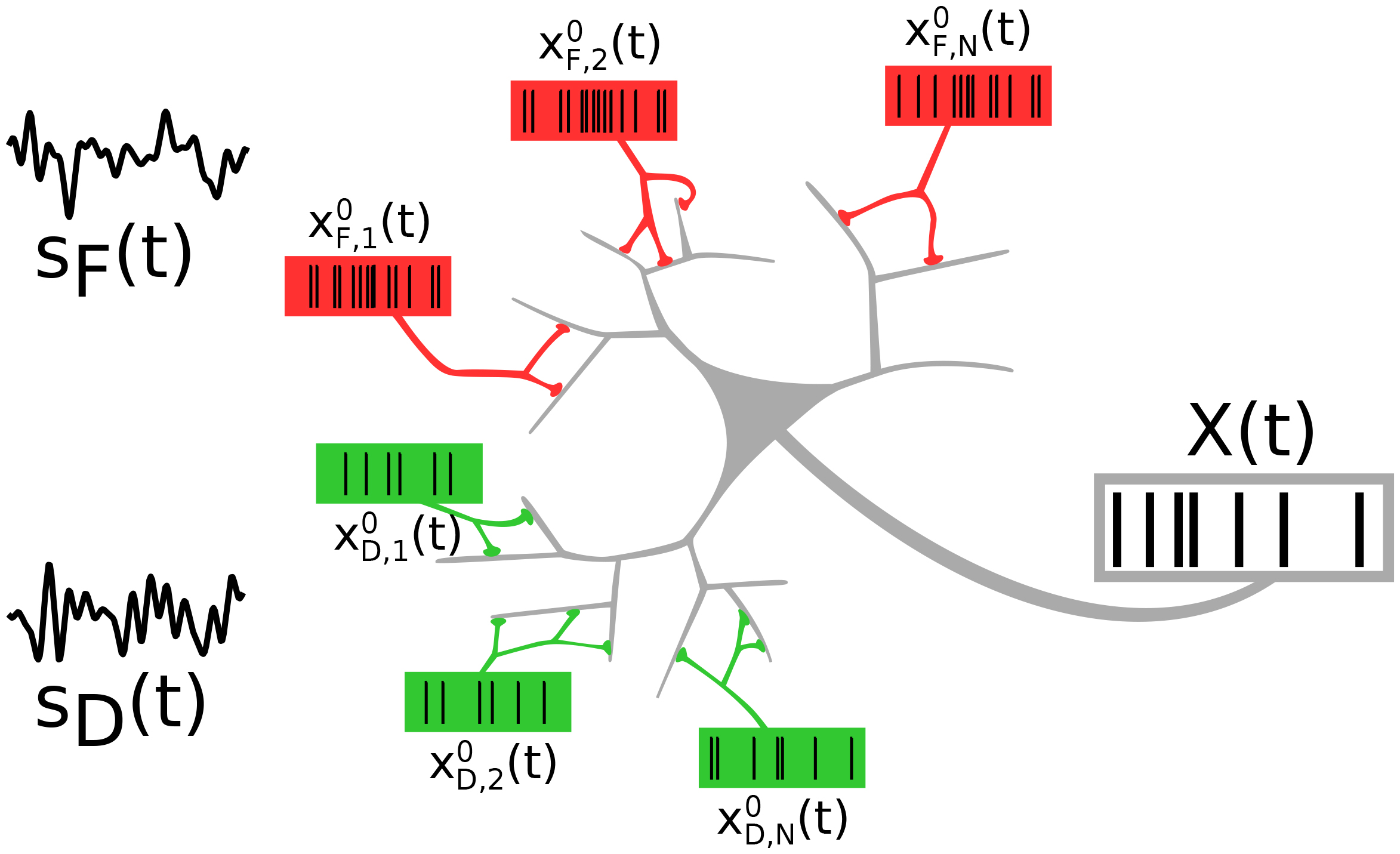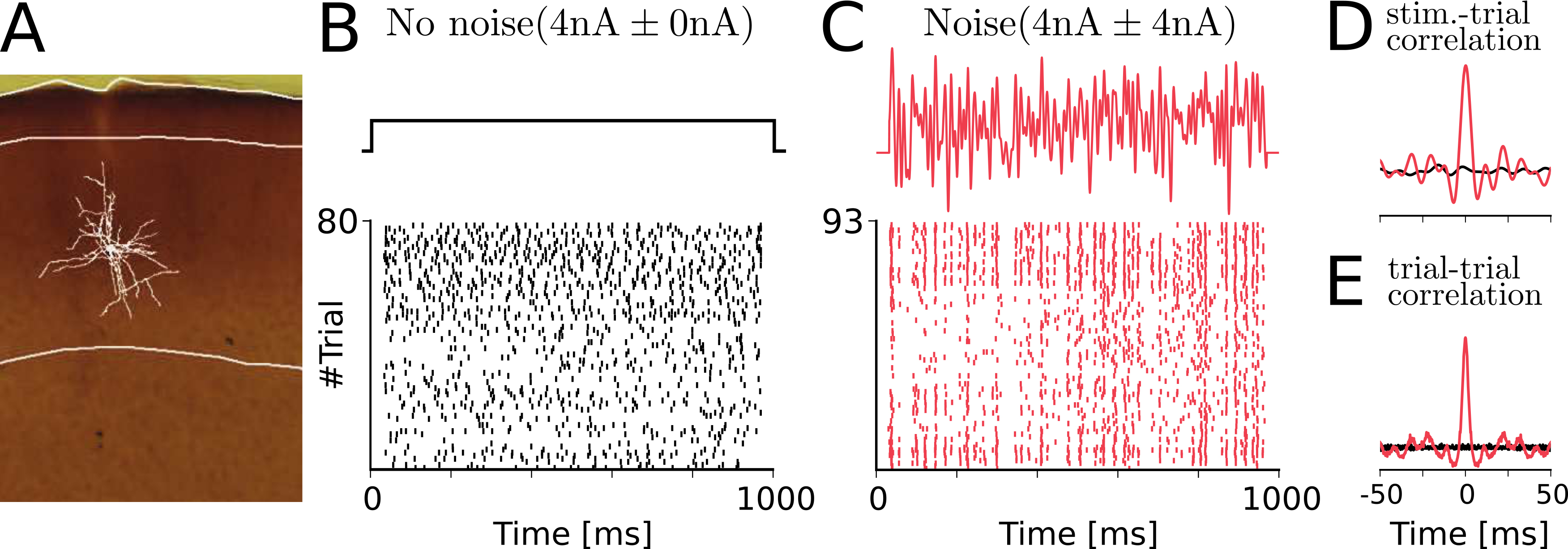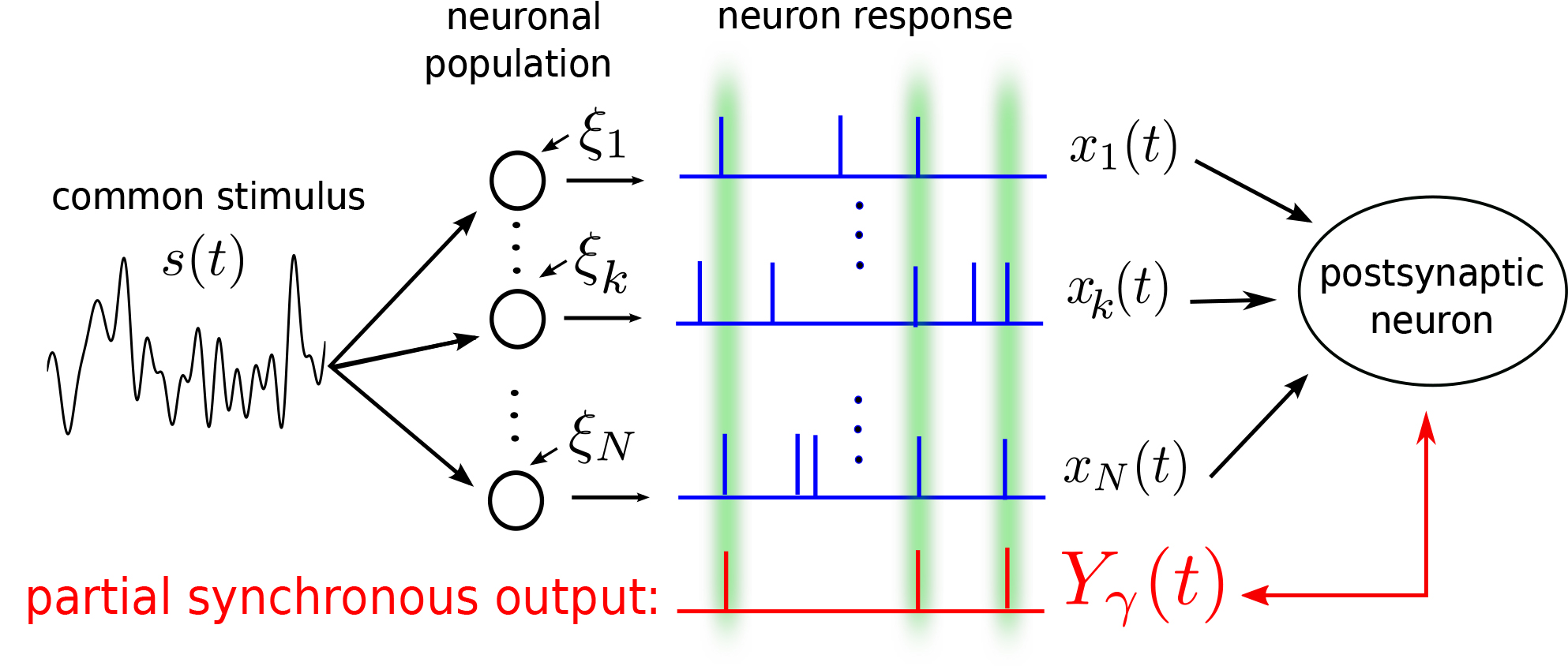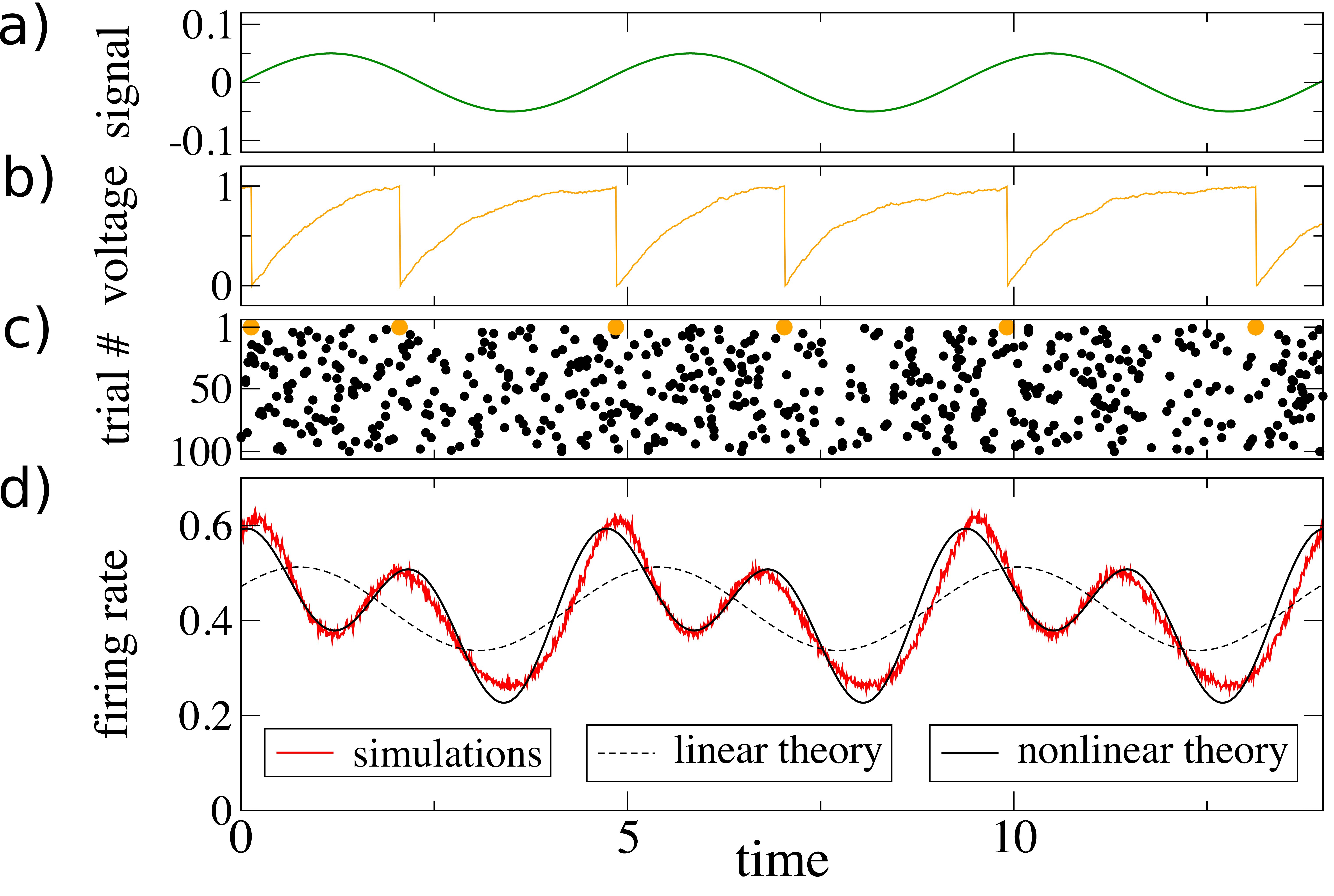Information transmission and processing |
||||



|
We study how time-dependent signals are encoded in spike trains of single neurons and neural populations. Special emphasize is on information coding, i.e. the question whether a neural system preferentially encodes information on the slow or fast stimulus components. We have studied this question in spatially extended neurons (Doose et al. 2016), in neurons with heterogeneous synaptic short-term plasticity (Droste et al. 2013), with subthreshold resonances (Blankenburg et al. 2015) or slow fluctuations (Blankenburg and Lindner 2016). At the population level we have analytically shown that groups of uncoupled neurons can, under certain conditions, highpass-filter sensory information in their synchronous activity (Sharafi et al. 2013, Kruscha 2015, 2016); results that helped to understand differences in coding strategy for distinct sensory populations (Grewe et al. 2017). We are also interested in proper measures of information transmission (Bernardi and Lindner 2015) and effects of shifting and deleting of spike times on information transfer (Voronenko et al. 2015). We develop methods to analytically calculate the neural response to time-dependent signals in the presence of non-Gaussian noise (Droste and Lindner 2017a,b) or synaptic short-term plasticity (Droste et al. 2013); for stronger stimuli we have recently extended such calculations to the nonlinear response of the firing rate (Voronenko and Lindner 2017). A related problem concerns the question how and if so how well a prescribed spike train can be evoked by stimulation with a Gaussian noise (Doose et al. 2016, Doose and Lindner 2017). |


|
||